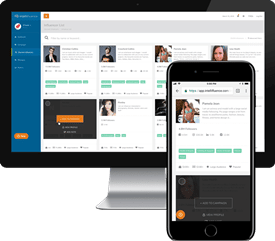Last Updated on December 9, 2020
At this point in the process, if you’re reading a piece on negotiating as an influencer, you have hopefully settled on an area of focus and are working hard on constantly optimizing your visibility. If you are, then it is no surprise that you’re now getting pitched. The question then: when and how should you negotiate?
In all fairness, we’ve written about negotiation before, from the optics of a brand reaching out to an influencer. For the sake of not wasting word count, I’d like to only address a few critical pieces to that when it comes to the mechanics of negotiating.
- Early on, you are best off establishing a relational negotiation strategy. Focus on a positive outcome for both parties that goes beyond immediate monetary needs — if the transaction is a success, the probability of a repeat opportunity is high.
- Seek to understand what a satisfactory outcome for the brand is. Is their goal sales-based? Is it a play for more exposure? What kind of ROI is needed that would result in follow-up work for yourself?
- After the reviews are in, seek feedback. Strange as it may be, some brands won’t automatically tell you if something went wrong or if something went really right; you need to ask.
Negotiate for Fit
If you’ve read the previous articles referenced above you’ll see that one of the themes I constantly try to hammer home is that of focus. This, then, probably won’t shock you. Negotiate for fit over money initially, until you establish yourself as an expert. The money will absolutely come the more you are perceived as being authentic and authoritative to a niche.
Example: a newbie blogger that reviews everything for $50 vs newbie blogger that only focuses on her niche, taking free product and cash if offered so that she can work up the chain to larger opportunities in that niche. The blogger that takes all reviews will likely never rise much in terms of desire by brands — the focus is too fractured and rarely seen as a fit; if anything the products to be reviewed will remain of a lower quality because the blogger will be seen as just another number…another blog link…another tweet…another video. The other newbie blogger, however, may be limiting potential income initially, but by focusing on fit, will become more attractive to brands seeking fit in that niche.
How important is that fit? According to Boostinsider the fit is everything — if you read closely, you’ll see that the product-influencer fit is so important that monetary considerations become an afterthought. Think about it this way: having the right influencer promoting the product is so important that it changes the perceived ROI calculation…if you can build your presence to be seen as such an influencer, the money will come.
When Should You Negotiate for Money?
When should you shift from negotiating for fit to money? Easy answer: when you are getting pitched mostly for your fit already and can become more selective. A takeaway to consider from Tandem in their piece on influence is this: the chief problem of influencer marketing isn’t its effectiveness, which by now is beyond repute, but rather the difficulty of scaling influencers due to the overriding importance of finding the ideal influencer-campaign fit, which of course goes back to understanding and focusing on buyer personas. There isn’t a magical industry calculation used in secret by the other 200 CEOs of influencer marketing companies as we sit around a very large table trying to determine how much each influencer is worth. I like math though, so I came up with a simple formula you can use when deciding when you should shift from primarily considering fit to primarily considering money. Behold, the take it calculation:
Take It? (TI) Calculation
(Value * Fit)/Market Rate = fit adjusted value of the opportunity
Value — the value in this calculation is the combined worth of the monetary and product considerations offered to you. A $50 offering that includes $25 of product would have a value of $75. Keep in mind that product worth is entirely dependent on you: the $25 worth of skin cream isn’t going to be worth more than $0.25 to me, because I don’t use it, but it might well be worth the full $25 to you.
Fit — this variable is easier to determine, the more focused you intend to be. If you want to be known as the expert skincare influencer, then the skin cream offer above might be a 100% fit, expressed as a percentage (1); if you are a hair and beauty blogger, maybe it isn’t perfect but still relevant, listed at (.75) for a 75% fit. If you’re me, then maybe (0.01), leaving the 1% chance I might find use for it.

Market Rate — how to determine market rate? In a Buffer piece on influencer marketing, which I think is a good complement to our own Ultimate Guide to Using Influencer Marketing, they posit that worth of an Instagram post is a function of engagement rate ((likes+comments)/followers) with some sort of multiplier applied on the actual audience size to calculate engaged reach. That type of linear calculation is fair, but falls apart at extremes when dealing with outliers like Kardashians and other celebs; if you’re there, well…thank you for joining Intellifluence; let me get you a coffee. There isn’t a true database of market rates for various activities and niches, but for your purposes by engaging with others in your industry you can get a rough feel for what an activity should cost.
If you can’t (or don’t) wish to engage with your peers, then you can base market rate on the average of your last 5 reviews for that niche opportunity & social platform . If you follow this metric, the TI would skew high in the very beginning since you’d need to build the experience and thus market rate would be close to zero; as you’re experienced you’ll have enough of your own data (the best kind of data) to help guide market rate.
Let’s calculate the TI for those three examples above:
New skincare influencer with zero similar posts
Value = $75
Fit = 1
Market Rate = $1
TI = (75*1)/1 = 75
Seasoned hair and beauty blogger with four similar posts
Value = $65
Fit = .75
Market Rate = $50
TI = (65*.75)/50 = .975
Joe taking a look at the product, having never reviewed such a product before
Value = $50.10
Fit = 0.01
Market Rate = $1
TI = (50.01*.01)/1 = .501
Cue hundreds of beauty and skincare brands hitting up my influencer profile now to be the first such brand I review
From the calculations we can see that it is painfully obvious that the new skincare influencer should jump at the opportunity; the decision is less clear for the seasoned hair and beauty blogger — if no other opportunities exist, then it is relevant enough to review, but not so much so that it is a “must” review. And of course, there’s little reason for me to do the review, even with me never having done such a review.
Now keep in mind, if you’re offered a significant sum on a low fit, it could still work, but the closer to 100% fit you get, the higher the TI becomes anyhow. What’s beautiful about the simplicity of this is as you become more authoritative, your fit as a % will likely continue to remain high as the value offered to you increases — there may be errant opportunities pitched at a high enough value to still consider, but for the most part you’ll be benefiting from a positive feedback loop that keeps you focused and enriched.
Respond to All Pitches
I’ll leave you with one more point. You are probably going to receive a significant volume of pitches over your career as an influencer, some not seemingly relevant and some perfect. Respond to all of them. Don’t be afraid to negotiate, don’t be afraid to say no (but say something), don’t take offense if you receive a “low ball” offer, and don’t forget to find your next opportunity by signing up as an influencer at Intellifluence today.

Joe, CEO and Co-Founder of Intellifluence, has over 25 years of experience in SEO, leading several successful marketing companies and providing expert consultation. He is the author of The Ultimate Guide to Using Influencer Marketing, which is available as an eBook or in print.






